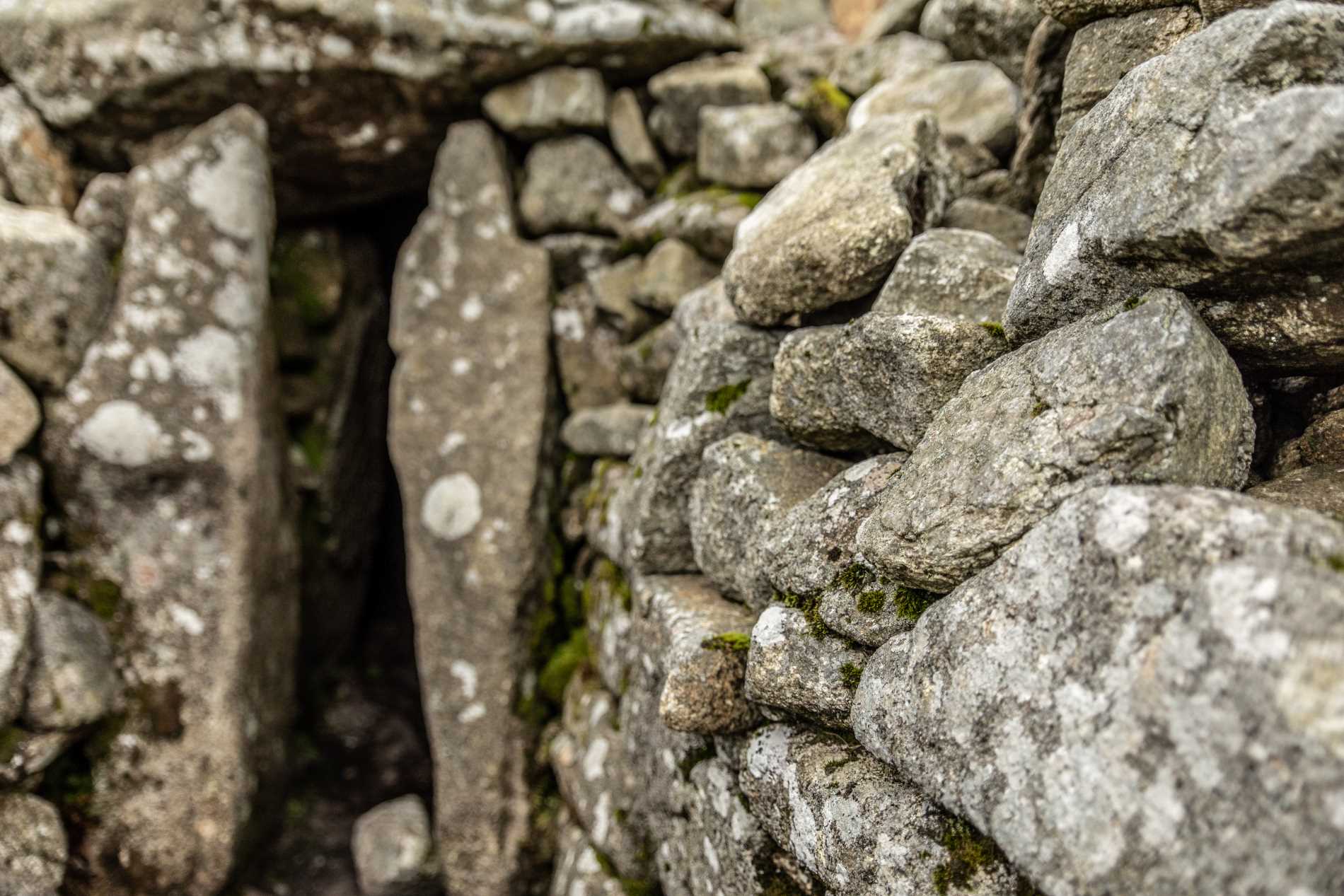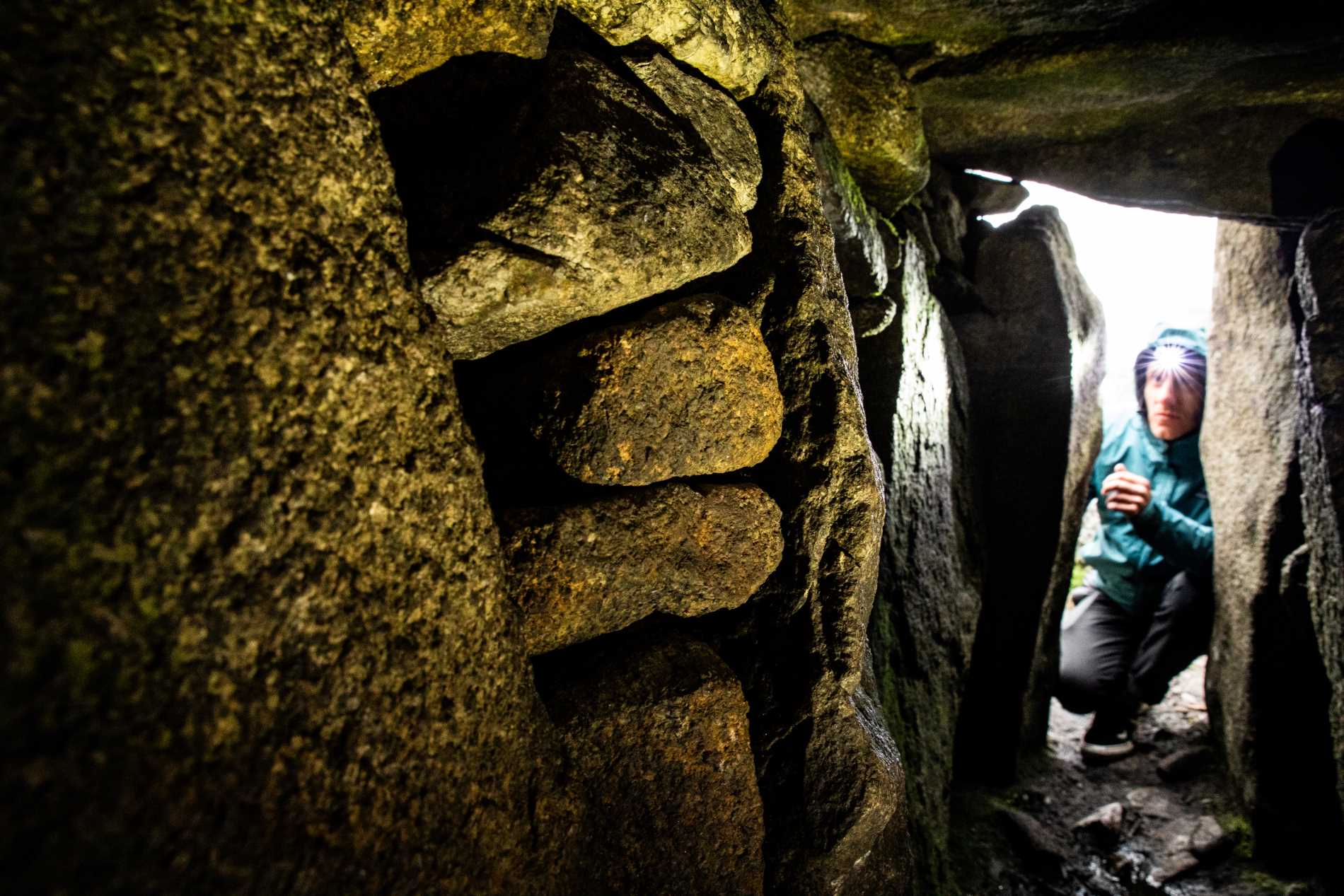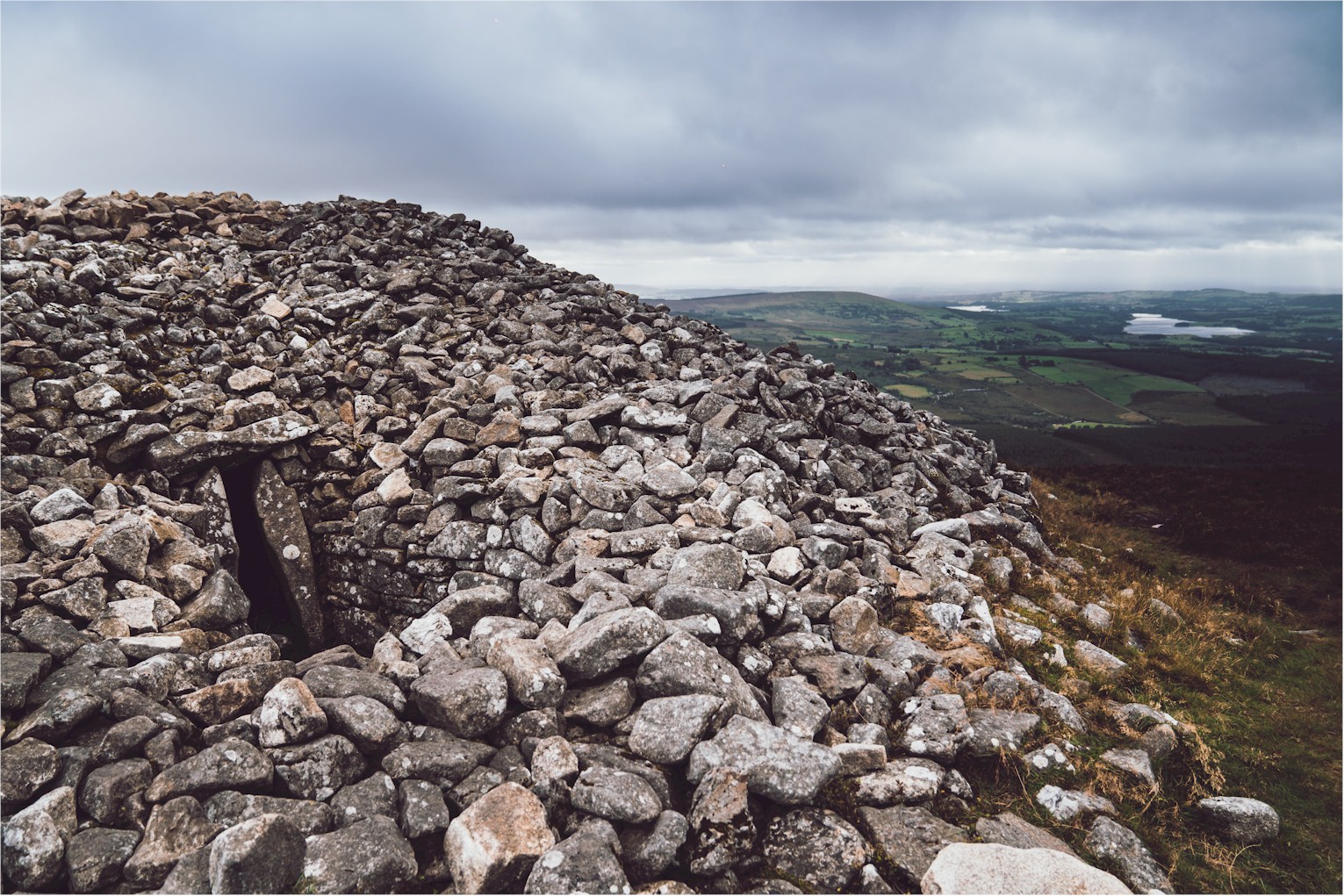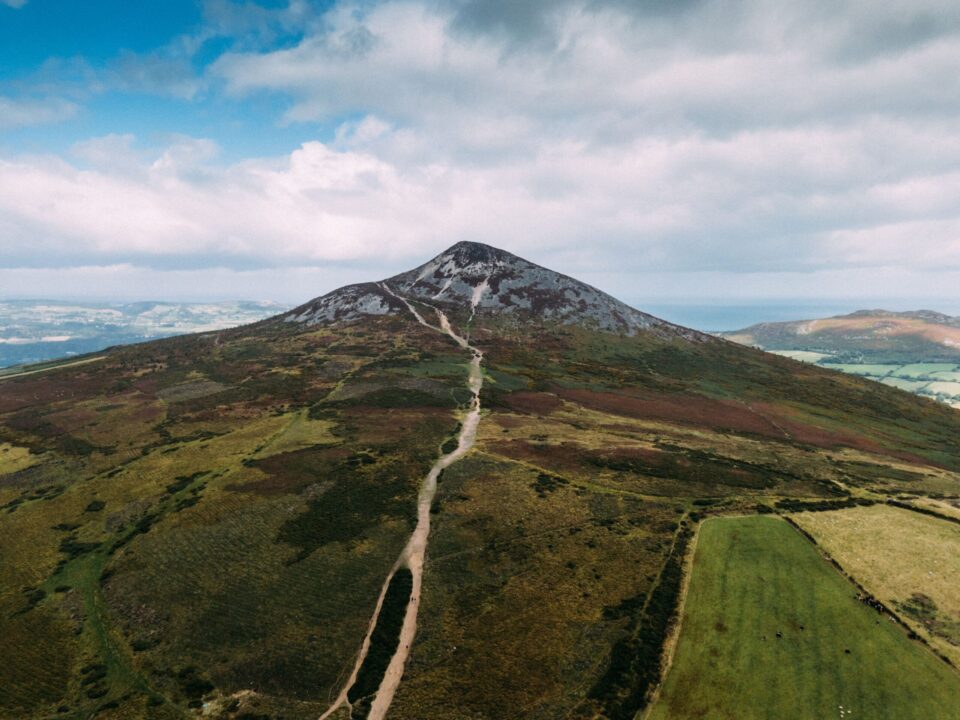Sacred Summits
Hidden in the Wicklow Mountains is a landscape rich in stories waiting to be discovered. Just on the border between Dublin and Wicklow lies a trio of mountains, Seefin, Seahan and Seefingan, each crowned with a megalithic monument of incredible antiquity. Beneath the cairns that mark these peaks are Neolithic passage tombs, similar in form to the famous site at Newgrange, built by the region’s first farmers around 5,000 years ago. Perhaps the most striking feature of these passage tombs, other than their age, is the elevation at which they were built: the summits of Seefin, Seahan and Seefingan stand at 621m, 647m and 724m respectively. The challenges associated with such an undertaking naturally give rise to the question as to why Wicklow’s Neolithic communities decided to build such large-scale monuments at such great heights. The answer lies in viewing these passage tombs, not as isolated monuments, but rather as part of the wider landscape. The passage tombs at Seefin, Seahan and Seefingan form part of an extended network of hilltop passage tombs dotted throughout the Dublin-Wicklow area. Crucially, intervisibility between monuments seems to have been an important feature of this network, which suggests the tombs may have served as landmarks demarcating a sacred or perhaps political territory. Accordingly, the sweeping views enjoyed from atop Seefin, Seahan and Seefingan likely played a part in the selection of these mountains as passage tomb sites.

Portals to the Otherworld
As the passage tombs outlived their creators and their original purpose was forgotten, later societies attached new myths and meaning to these ancient monuments marking the landscape. Over time, passage tombs became known in Irish folklore as portals to the ‘Otherworld’, the realm of myth and magic, existing outside of normal space and time and yet just alongside the real world as if divided by a veil. The mythological significance associated with the passage tombs at Seefin and Seefingan is revealed by the mountains’ Irish names – Suí Finn and Suí Fionnagáin – meaning ‘seat of Fionn’, referring to the legendary hero Fionn Mac Cumhaill, leader of the Fianna warrior band. Fionn Mac Cumhaill is associated with many place-names across Ireland, but the hero’s connection to these mountains in particular likely stems from the fact that both Seefin and Seefingan overlook the valley of Glenasmole, famed as a favourite hunting-ground of the Fianna. Indeed, Glenasmole serves as the setting for many stories from the Fenian cycle: here, Fionn and the Fianna are said to have hunted countless deer, fought witches and monsters, and it is to Glenasmole that Oisin, son of Fionn, is said to have returned after his long stay in Tir na nOg, the land of eternal youth. In this context of a landscape steeped in legend, it is easy to see how Seefin passage tomb was re-imagined as the sitting place of Fionn Mac Cumhaill, watching over the hunt in the valley below.

This post was created in collaboration with HeritageHiking, a citizen heritage project showcasing the unique history and mythology of the Wicklow Mountains. To discover more hidden stories of the Wicklow Mountains, check out @heritage_hiking on Instagram.



